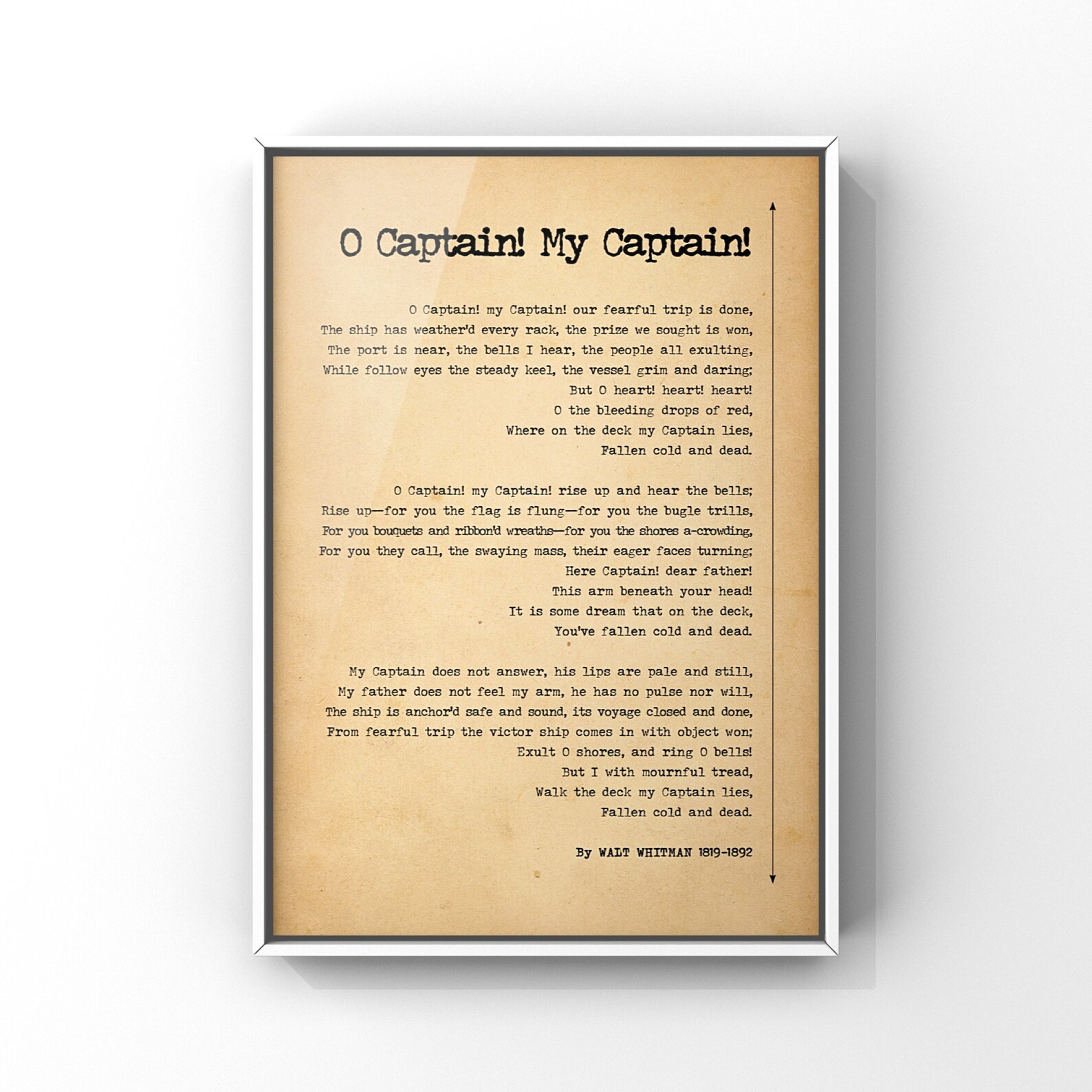

This tragic assassination was a shock to the already struggling nation. Just six days later on April 15, 1865, Lincoln was shot by Southern sympathizer John Wilkes Booth.

In “O Captain! My Captain!” Whitman’s depiction of Lincoln’s heroism is based on Lincoln’s success in preserving the union, or bringing the “ship of state” safely to port.Īfter a bloody war, which cost the lives of over 620,000 men, Confederate General Robert E. For the nation to split into two so soon after its creation would signal a failed experiment and national humiliation. Much of the world still regarded America as the “great experiment” in democracy. In 1861, the United States had only been in existence for about 85 years. Instead, it focuses on one of the main reasons Northerners fought in the war: the preservation of the union. While slavery was at the heart of the South’s desire for independence, Whitman’s poem does not mention this issue.

During the Civil War (1861-1865), Northern states fought against Southern states in response to the South’s attempt to secede from the union. To properly understand this poem, students must also be aware of the basics of the American Civil War and Lincoln’s assassination. Extended metaphors are sometimes referred to as conceits, particularly in the complex poetry of the 17th century. To understand an extended metaphor, readers must understand the intended meaning behind each smaller comparison within the main metaphor. The road is the general topic of comparison, but the fork and the leaves are the more specific aspects explored. As the poem continues, the fork in the road represents a choice in life, the new-fallen leaves represent fresh opportunities, and so on. In Robert Frost’s poem, “The Road Not Taken” for example, the road is a metaphor for life. An extended metaphor generally makes a broad comparison and then grows more specific, comparing smaller attributes associated with the topic. As the metaphor is extended, various aspects of the two things being compared are addressed. The poem also contains a few nautical terms that students might need defined, and younger students may need a reminder about the use of poetic contractions in words such as “ribbon’d” and “weather’d”.Īn extended metaphor is a comparison between two unlike things that lasts throughout multiple sentences of prose or lines of poetry. Students may benefit from discussion of the term extended metaphor before beginning the poem. Although, on the surface, “O Captain! My Captain!” depicts the death of a ship’s captain, it uses an extended metaphor to describe Lincoln’s passing and its effect on his supporters.


 0 kommentar(er)
0 kommentar(er)
